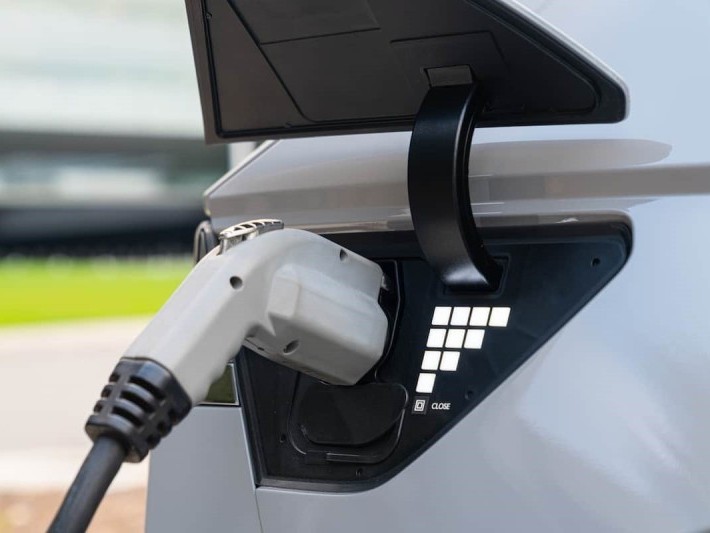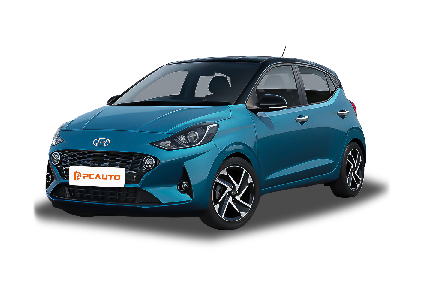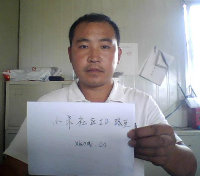Q
Is the i10 a 5 seater or 4 seater?
The Hyundai i10 is a standard five-seater vehicle with a 2+3 seat layout. It can accommodate two people in the front row and three in the back row, fully meeting the demand for small cars in the Malaysian market. Although the car has a compact body size, through reasonable space design, it ensures the basic seating comfort for five adult passengers. Meanwhile, the trunk space can also meet daily needs. In Malaysia, small cars like the i10 are very popular. They are not only suitable for city driving and easy to park but also have excellent fuel economy, which is very suitable for local road conditions and driving habits. For family users or young consumers, the five-seat design of the i10 offers more flexibility, making it capable of handling both daily commutes and weekend outings. It should be noted that although the i10 is a five-seater, the comfort of the middle seat in the back row during long-distance driving may be slightly inferior to the seats on both sides, which is a common feature of most small cars. In addition, it is recommended to take a test drive to experience the space and ensure it meets your personal needs when making a purchase.
Special Disclaimer: This content is published by users and does not represent the views or position of PCauto.
Related Q&A
Q
Hyundai i10 มีระบบเข้ารถแบบไม่ใช้กุญแจหรือไม่
Hyundai i10 บางรุ่นระดับสูงในตลาดมาเลเซียมาพร้อมระบบเข้ารถแบบไม่ใช้กุญแจ แต่การติดตั้งขึ้นอยู่กับปีและรุ่นของรถจึงควรสอบถามดีลเลอร์เพื่อยืนยันสเปกล่าสุด ระบบเข้ารถแบบไม่ใช้กุญแจช่วยปลดล็อกประตูอัตโนมัติเมื่อพกกุญแจอัจฉริยะ เพิ่มความสะดวกในชีวิตประจำวันโดยเฉพาะเวลาถือของหรือช่วงฝนตก โดยปกติจะทำงานร่วมกับระบบสตาร์ทเครื่องยนต์แบบปุ่มกด รุ่นพื้นฐานอาจยังใช้กุญแจแบบเดิม ในสภาพอากาศร้อนและฝนชุกของมาเลเซียควรตรวจสอบแบตเตอรี่กุญแจเป็นประจำและหลีกเลี่ยงวางกุญแจใกล้อุปกรณ์อิเล็กทรอนิกส์เพื่อป้องกันสัญญาณรบกวน รุ่นในระดับเดียวกันเช่น Perodua Axia และ Proton Saga ก็มีฟังก์ชันคล้ายกัน ผู้บริโภคสามารถเปรียบเทียบฟังก์ชันตามงบประมาณและความต้องการ หากเลือกซื้อ i10 มือสองควรตรวจสอบสเปกรถจากโรงงานเดิม เพราะบางคันอาจติดตั้งโมดูลเข้ารถแบบไม่ใช้กุญแจที่ไม่ใช่ของแท้ ความเสถียรและความปลอดภัยจึงต้องพิจารณาอย่างรอบคอบ
Q
Hyundai i10 มีฟังก์ชัน Stop Start หรือไม่
ใช่แล้ว Hyundai i10 บางรุ่นมาพร้อมเทคโนโลยี Stop Start ฟังก์ชันนี้ช่วยปิดเครื่องยนต์อัตโนมัติเมื่อรถจอดชั่วคราวเพื่อลดการใช้เชื้อเพลิงและการปล่อยไอเสีย เหมาะอย่างยิ่งกับการขับขี่ในเมืองมาเลเซียที่ต้องจอดบ่อย แต่การมีฟังก์ชันนี้ขึ้นอยู่กับปีและรุ่นของรถเพราะแต่ละรุ่นอาจมีอุปกรณ์แตกต่างกัน เทคโนโลยี Stop Start เป็นการออกแบบเพื่อสิ่งแวดล้อมที่เริ่มพบได้ทั่วไปโดยเฉพาะในเส้นทางที่รถติดช่วยลดการใช้เชื้อเพลิงได้จริง แต่บางคนอาจกังวลว่าการสตาร์ทรถบ่อยจะกระทบแบตเตอรี่และมอเตอร์สตาร์ท แต่อย่างที่ทราบ Hyundai ได้ปรับปรุงชิ้นส่วนให้แข็งแรงทนทานเพื่อรองรับฟังก์ชันนี้ หากสนใจควรสอบถามรายละเอียดรุ่นและอุปกรณ์กับดีลเลอร์ Hyundai ในพื้นที่ก่อนซื้อและสามารถทดลองขับเพื่อสัมผัสการใช้งานจริงของระบบสตาร์ท-สต็อป
Q
Does the Hyundai i10 lock automatically?
Regarding the question of whether the Hyundai i10 has an automatic locking feature, the availability of this function in the i10 depends on the specific model year and configuration. Newer i10 models generally come with a speed-sensitive automatic door locking system. When the vehicle's speed exceeds a certain threshold (for example, 20 km/h), the doors will lock automatically. This design is highly practical in the Malaysian market as it enhances driving safety, especially for city driving where traffic congestion is common. However, the early basic versions may require manual locking. It is recommended that owners refer to the user manual or check through the vehicle settings menu on the steering wheel.
Hyundai has been increasingly emphasizing safety technology in recent years. Compact cars like the i10 have gradually added features such as smart key systems and anti-theft alarms. If your vehicle does not have an automatic locking function, you can consider installing an original-factory safety module. In Malaysia's hot and humid climate with frequent rainfall, it's also important to regularly check the waterproofing of the door lock motors and wiring harnesses to prevent poor contact due to long-term use.
Q
Does the Hyundai i10 have automatic transmission?
Yes, the Hyundai i10 in the Malaysian market offers an automatic transmission option. Specifically, it is equipped with a 4-speed automatic transmission (4AT). This transmission is easy to operate and has relatively low maintenance costs, making it suitable for urban commuting needs. As an economical small car, the automatic version of the i10 is quite popular locally, especially among novice drivers or those who often encounter congested traffic conditions.
Apart from the transmission choice, the i10 is also well-known for its flexible handling and compact body, which are highly suitable for the narrow streets and parking situations in Malaysia. It should be noted that the configurations of the i10 may vary slightly from year to year. It is recommended to confirm the latest specifications with an authorized dealer before purchasing.
In addition, although an automatic transmission provides driving convenience, regularly changing the transmission fluid and maintaining good driving habits can extend its service life. This is also an important maintenance aspect that all owners of automatic - transmission cars should pay attention to.
Q
Is the Hyundai i10 a timing belt or chain?
The Hyundai i10 uses a timing chain instead of a timing belt. This design has more advantages in terms of durability and maintenance cost. Usually, it doesn't need to be replaced regularly like a timing belt. You only need to regularly check the chain tensioner and lubrication condition, which makes it suitable for the hot and rainy climate in Malaysia.
Compared with the timing belt, the timing chain is more resistant to high temperatures and wear. Its service life is basically the same as that of the engine, reducing the risk of engine damage caused by belt breakage for car owners. However, the chain may be a bit noisier than the belt during operation.
It's very important for Malaysian car owners to know the type of timing system in their vehicles. Generally, the timing belt needs to be replaced every 60,000 to 100,000 kilometers, while the chain significantly reduces the maintenance frequency and cost in this regard. It is recommended that car owners still follow the manufacturer's maintenance manual for regular inspections to ensure the long - term stable operation of the engine.
Q
Is the Hyundai i10 AMT or CVT?
In the Malaysian market, the Hyundai i10 offers the AMT (Automated Manual Transmission) as a transmission option instead of the CVT (Continuously Variable Transmission). Structurally, the AMT is similar to the traditional manual transmission, but it achieves automatic gear-shifting through an electronic control system. It features low cost and easy maintenance, making it suitable for city commuting. However, there might be a slight jerk during gear-shifting.
In contrast, the CVT achieves continuously variable transmission through a steel belt and conical pulleys. It provides better smoothness and generally has better fuel economy, but its manufacturing cost is relatively high. For Malaysian consumers, the i10 with the AMT version can balance economy and convenience, especially for users with limited budgets who value practicality. If you have higher requirements for driving smoothness, you can consider other models equipped with CVT. However, it's necessary to pay attention to the long-term maintenance costs and the compatibility with driving habits of different transmission types.
Hyundai optimizes its technology choices based on the vehicle's positioning and market demand. The AMT configuration of the i10 also reflects its consideration of the practicality of entry-level small cars.
Q
Is the Hyundai i10 automatic?
Yes, the Hyundai i10 offers an automatic transmission version in the Malaysian market. Specifically, it is equipped with a 4-speed automatic transmission (4AT). This small car is mainly focused on economy and practicality, making it suitable for city commuting. Its automatic version is easy to operate and has a reasonable fuel consumption, which is very suitable for the congested traffic environment in Malaysia. As a B-segment vehicle, the Hyundai i10 has a compact body but a reasonably designed interior space. It is equipped with basic safety features such as dual airbags and ABS. Meanwhile, some high-end versions may also offer convenient features like a touchscreen entertainment system, and its cost-effectiveness is quite competitive in the local market. It's worth noting that although the 4AT technology is relatively old, it has the advantages of low maintenance costs and high stability, which is a good choice for consumers with limited budgets who value durability. If you're looking for a smoother driving experience, you can also pay attention to CVT transmission models of peer competitors such as the Perodua Axia or Proton Saga, but you need to weigh according to your personal budget and needs.
Q
Where is the Hyundai i10 made?
The production base of the Hyundai i10 is mainly at the Hyundai Motor India factory in Chennai, India. This factory is one of Hyundai's global strategic production bases and specializes in producing small cars to meet the demands of the Asian and some European markets. For the Malaysian market, the i10 sold locally is usually imported from India. However, the specific source of the vehicles may vary depending on the year or configuration. It is recommended that consumers confirm the latest information through the official channels of Hyundai in Malaysia.
It's worth mentioning that the Indian factory adopts global production standards to ensure that the quality and craftsmanship of the i10 are consistent with those of the versions in other regions. This model is well-known for its flexible handling and fuel efficiency, making it particularly suitable for the urban road conditions in Malaysia.
Hyundai also offers a five-year unlimited-mileage warranty policy in the Southeast Asian market, providing additional protection for local consumers. If you're considering purchasing the i10, you can visit an authorized dealer to experience its 1.2L Kappa engine and intelligent connectivity features. These configurations are quite competitive among models in the same class.
Q
Which engine is the best for Hyundai i10?
The Hyundai i10 mainly offers a 1.2-liter Kappa four-cylinder naturally aspirated engine option in the Malaysian market. This engine delivers 82 horsepower and 118 Nm of torque. Paired with a 4-speed automatic or 5-speed manual transmission, it is highly suitable for urban commuting. Its low-speed torque tuning makes it more fuel - efficient in stop - and - go traffic, with an average fuel consumption of about 5.2 liters per 100 kilometers. Meanwhile, the maintenance cost is relatively low, making it a great choice for Malaysian consumers with limited budgets.
If you have higher requirements for power, you can consider the 1.0-liter T-GDI turbocharged version available in overseas markets. However, it should be noted that this version has not been officially introduced in Malaysia. When choosing an engine, it is recommended to give priority to local road conditions. The rainy climate and congested traffic in Malaysia are more suitable for the linear output of naturally aspirated engines. Turbocharged engines may increase the risk of carbon deposits during long-term low-speed driving.
In addition, the CVVD (Continuous Variable Valve Duration) system used in Hyundai's Smartstream engine technology can improve fuel efficiency. However, for daily maintenance, it is necessary to strictly follow the original manufacturer's recommendations and use low - ash oil to keep the engine in its best condition.
Q
Is the i10 3-cylinder or 4-cylinder?
The Hyundai i10 models available in the Malaysian market are equipped with a 1.2-liter Kappa four-cylinder engine instead of a three-cylinder configuration. This naturally aspirated engine uses multi-point fuel injection technology, with a maximum power of 87 horsepower and a peak torque of 120 N·m. It is paired with a 5-speed manual or 4-speed automatic transmission, which is suitable for urban commuting needs. For Malaysian consumers, the smoothness and durability of four-cylinder engines are usually more favored, especially in congested sections with frequent stops and starts. Compared with three-cylinder engines, they produce less vibration and have relatively stable maintenance costs. It's worth noting that in recent years, some small cars have adopted a three-cylinder design to reduce fuel consumption, but the four-cylinder structure still has advantages in terms of the linearity of power output and high-speed stability. It is recommended to make a choice based on your own driving habits and budget before buying a car. At the same time, you can refer to the actual test comparisons of vehicles in the same class by Malaysian automotive media, such as the performance differences between the three-cylinder Perodua Axia and the four-cylinder Proton Saga, to make a more comprehensive decision.
Popular Cars
Model Year
Car Compare
Car Photo
Latest Q&A
Q
How reliable is a 2019 Porsche Macan?
The 2019 Porsche Macan delivers solid reliability, thanks to its proven 2.0T or 3.0T engines that offer consistent power delivery. The PDK dual-clutch transmission is another strong point—it’s both durable and buttery-smooth.
Porsche’s sporty DNA shines through in the Macan’s chassis tuning and all-wheel-drive system, yet it doesn’t compromise everyday comfort. Owner feedback suggests that sticking to the factory maintenance schedule keeps most examples running trouble-free, though be prepared for higher upkeep costs (as with any luxury vehicle).
Its strong resale value speaks volumes about its reputation for dependability. If you’re after driving thrills without sacrificing SUV practicality, the 2019 Macan is a compelling pick. Just be sure to get a pre-purchase inspection and verify full service history—it’ll pay off in the long run.
Q
How much is a 2019 Porsche worth?
The value of a 2019 Porsche depends on the model, mileage, condition, and specs. Take the popular Cayenne, for example—used ones typically go for between RM300k to RM500k. A 911 Carrera might range from RM500k to RM800k, while an entry-level 718 Boxster or Cayman could be around RM250k to RM400k. For luxury sedans like the Panamera, expect prices between RM350k to RM600k, but always check the actual condition and option list.
Porsches hold their value well, especially limited editions or high-performance GT models, but maintenance costs and service history play a big role in resale pricing. If you're buying, stick to official certified pre-owned channels or get a professional inspection. Always verify warranty transfers and repair records.
Pro tip: Compare listings on local used-car platforms and check recent sales data—market demand and inventory fluctuations affect pricing. Also, factory options (like sport packages or premium audio) can boost resale value, while accident history or multiple owners might slash the price by 10-20%.
Q
Does the 2019 Macan have a good sound system?
The 2019 Porsche Macan delivers an impressive audio performance, particularly with the optional Bose® Surround Sound System or the top-tier Burmester® High-End Surround Sound System—both offering an immersive listening experience.
The Bose® setup packs 14 speakers with 665 watts of total power, delivering crisp audio and punchy bass perfect for pop and electronic music. Meanwhile, the Burmester® system steps it up with 16 speakers and 1,000 watts, creating a wider soundstage and superior detail reproduction—ideal for classical or high-resolution tracks.
Both systems integrate seamlessly with Porsche’s standard Communication Management (PCM), supporting Apple CarPlay and multiple audio sources. If sound quality is a priority, be sure to specify your audio preference at purchase—the base model only comes with a standard speaker setup.
For the best performance, play lossless files via USB or high-quality Bluetooth codecs, and keep the system firmware updated for optimal operation.
Q
What is the resale value of a 2019 Macan?
The resale value of a 2019 Porsche Macan depends on factors like condition, mileage, specs, and service history. Current used prices hover between RM250k to RM350k, with higher trims commanding premium prices. As Porsche's entry SUV, the Macan holds its value better than most rivals thanks to brand prestige and sporty DNA – especially models optioned with Sport Chrono or full leather interiors fetching stronger money.
Pro tip: Get a pre-sale inspection and organize your maintenance paperwork – this really helps maximize resale. Macans move quickly in our local used market, with 3-5 year-old examples being the sweet spot when depreciation levels off. If you're upgrading, consider Porsche Approved Certified pre-owned – you'll pay a slight premium over private sales, but the extended warranty and factory refurbishment save headaches down the road.
Q
Is a 2019 Porsche Macan a good car?
The 2019 Porsche Macan is a well-rounded luxury SUV that stays true to Porsche's performance DNA while delivering everyday practicality. It comes with your choice of a peppy 2.0T or more powerful 3.0T engine, paired with Porsche's brilliant 7-speed PDK transmission that shifts like butter. The chassis strikes that sweet spot between sporty handling and comfortable cruising - perfect for both city commutes and weekend backroad blasts.
Inside, you'll find Porsche's typical top-notch craftsmanship with a standard 10.9-inch touchscreen featuring Apple CarPlay. Just don't expect limo-like rear legroom. These things hold their value surprisingly well, though maintenance will cost you more than your average SUV - but then again, you get Porsche's excellent service network.
Among its competitors, the Macan stands out for its driver engagement. If you want more grunt, step up to the Macan S or GTS. One pro tip: if you're shopping used, pay special attention to the PDK's condition and inspect the suspension components. Always better to go through Porsche's certified pre-owned program for that extended warranty peace of mind.
View MoreRelated News

In Malaysia, which sliding door MPVs are available?
MichaelOct 30, 2025

Modern Ioniq 5 N Lands in Malaysia: Track-Level Performance Electric Vehicle is Here, Priced Possibly Below RM 400,000?
JohnSep 10, 2025

Hyundai's Big Return to Malaysia: Top 5 Models Expected
MichaelMay 30, 2025

580,000 km & 87.7% Battery Health: Ioniq 5’s Incredible Durability
MichaelMay 6, 2025

Revolutionizing Hybrids: Hyundai’s New System vs. Toyota's Hybrid System
Kevin WongApr 22, 2025
View More


















Pros
Cons